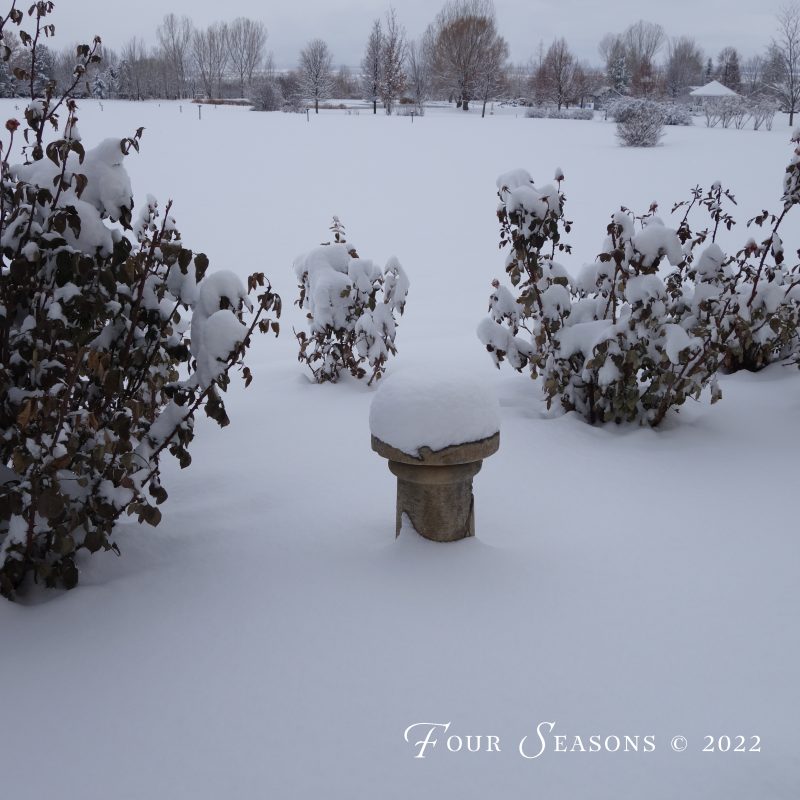Even though it’s not planting season, there is still a gardening chore you need to be doing right now and that’s watering. Even though we’ve had some snow, in most places it hasn’t been enough to keep the roots of your plants well hydrated and one of the most common causes of winterkill among trees, shrubs, and perennials is lack of water during the winter months. Winter watering now is critical to their health and survival.
This fall was dry and this means that there simply isn’t enough moisture in the soil to keep the roots well hydrated and carry them through the winter, but it did set up the perfect storm for winterkill conditions. It’s really pretty simple…if they dry out, they’ll die. Lack of winter watering is not always evident immediately but the lack of moisture may mean that the roots dry out under the ground which will eventually weaken the plant. Although often plants will have enough strength to leaf out in the spring and bloom, if the roots have not been kept well irrigated over the winter, when the hot, dry days of summer arrive, the roots will be smaller and will not be able to transfer water from the ground to the plant fast enough to keep it healthy. Even though they may struggle to survive for some time, generally they won’t live long or ever be truly fine specimens. Trees, shrubs, and perennials planted within the last year are particularly vulnerable.
Established plants can dry out too when we experience excessively dry conditions, so your best bet to ensure their survival is to water all plants, if possible. Even if you live in an area that has had some snow cover, many times the snow contains so little moisture content that it provides little in the way of accessible water for your plants.
Our general rule of thumb is to water every holiday between Halloween and Easter. Since the holidays fall approximately once a month- Halloween, Thanksgiving, Christmas, New Years, Valentine’s Day, St. Patrick’s Day, then Easter- it’s a simple way to remember to water during the off season. Evergreens especially may need some supplemental water since they do not go dormant during the winter as other trees and shrubs do. However, as dry as this winter has already been, I would encourage you to bump this up to twice a month, particularly if we don’t start to receive any appreciable moisture.
Begin by checking the soil around your plants. If it’s dry and dusty, then supplemental water is definitely needed. Water only when temperatures are above freezing- usually in the 40’s or higher if possible. Water deeply and thoroughly when you do water. Water early to mid-day so that the water has a chance to soak in before it freezes again at night. As dry as it has been, I would suggest that you give your plants all the water they will take, until it runs off. This means approximately 5-10 gallons for a tree, 3-5 gallons for a shrub, and a gallon or so for a perennial but even a little bit is better than nothing.
Keep in mind that those plants on the south and west sides of your home or property will probably need more water, and more frequently, than those on the shadier east or north where moisture does not tend to evaporate as quickly. Shallow rooted plants such as junipers, birches, Colorado Spruce and others will need more water too, as their root systems aren’t deep enough to pull stored water from the ground. An application of mulch at this time will also help to retain moisture and help your plants survive.
Think of it this way – your plants need water during the dry, winter months, just like we need lotion and moisturizer for our hands and lips to keep them from drying out. Keep everything well hydrated and you’ll have happy plants come spring!

